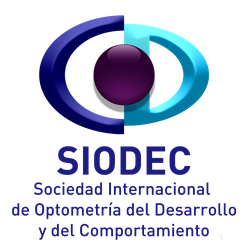Autism and Vision
People with autism often have difficulty processing and responding to sensory information, including visual information. These challenges may include problems with communication, social interaction, or properly processing visual stimuli, which can affect their development, learning, and quality of life.
The challenges in sensory processing that individuals with autism face may include difficulties in interpreting visual stimuli or coordinating their vision with other senses.
- Lack of coordination between central and peripheral vision:
- It can be difficult for them to focus directly on an object or person. They often visually scan or look to the sides instead of fixing their gaze directly.
- Eye movement disorders:
- Includes difficulties in tracking moving objects (tracking) or shifting gaze from one point to another (saccades), affecting activities such as reading or following visual instructions.
- Strabismus:
- A deviation in eye alignment is more common in autistic individuals, which can lead to double vision or difficulties focusing.
- Visual hypersensitivity:
- Many people with autism are hypersensitive to visual stimuli, such as bright lights, intense colors, or complex visual patterns, which can cause them to avoid certain environments or activities.
- Visual information processing problems:
- Difficulties in correctly interpreting what they see, which can influence the perception of space, depth, and the relationships between objects.
These visual problems create a series of behaviors that we can see in people with autism:
- Avoid eye contact.
- Focus on rotating objects, lights, or repetitive patterns.
- Glancing to the sides or using peripheral vision instead of looking directly.
- Difficulty maintaining visual attention on specific tasks.
Assessment of the person with autism
The visual exams for people with autism adapt to their development and needs. These evaluations, in addition to assessing visual function, focus on observing how the patient interacts with their environment in activities such as walking, sitting, catching, or throwing a ball, which helps to understand their visual perception and identify the strategies we can use to help them improve their visual information processing.

Treatment to improve quality of life
Once a thorough examination is conducted and visual problems are identified, we can begin treatment. The goals of the treatment are to improve the ability of the person with autism to organize and process visual information more efficiently.
An appropriate treatment can help people with autism to:
- Organizar el espacio visual.
- - Improve eye coordination.
- Ganar estabilidad periférica.
- - Improve their attention and visual focus.
- - Improve visual processing.
- - Develop better coordination between vision and movement.
These goals can reduce sensory overload and allow the person with autism to feel less overwhelmed by visual stimuli and interact with the world more comfortably.
Depending on the test results, the following treatments may be recommended:
- Lenses and filters:
- To treat refractive problems such as myopia, hyperopia, or astigmatism.
- To improve your spatial awareness
- Vision therapy:
- Includes exercises designed to improve eye coordination, visual processing, and eye movements.
- Environmental modifications:
- Reduce intense visual stimuli, such as bright lights or complex patterns, to avoid sensory overload.
- Focus on specific visual skills:
- Improve attention to central vision, stabilize peripheral vision, and promote efficient visual coordination.
